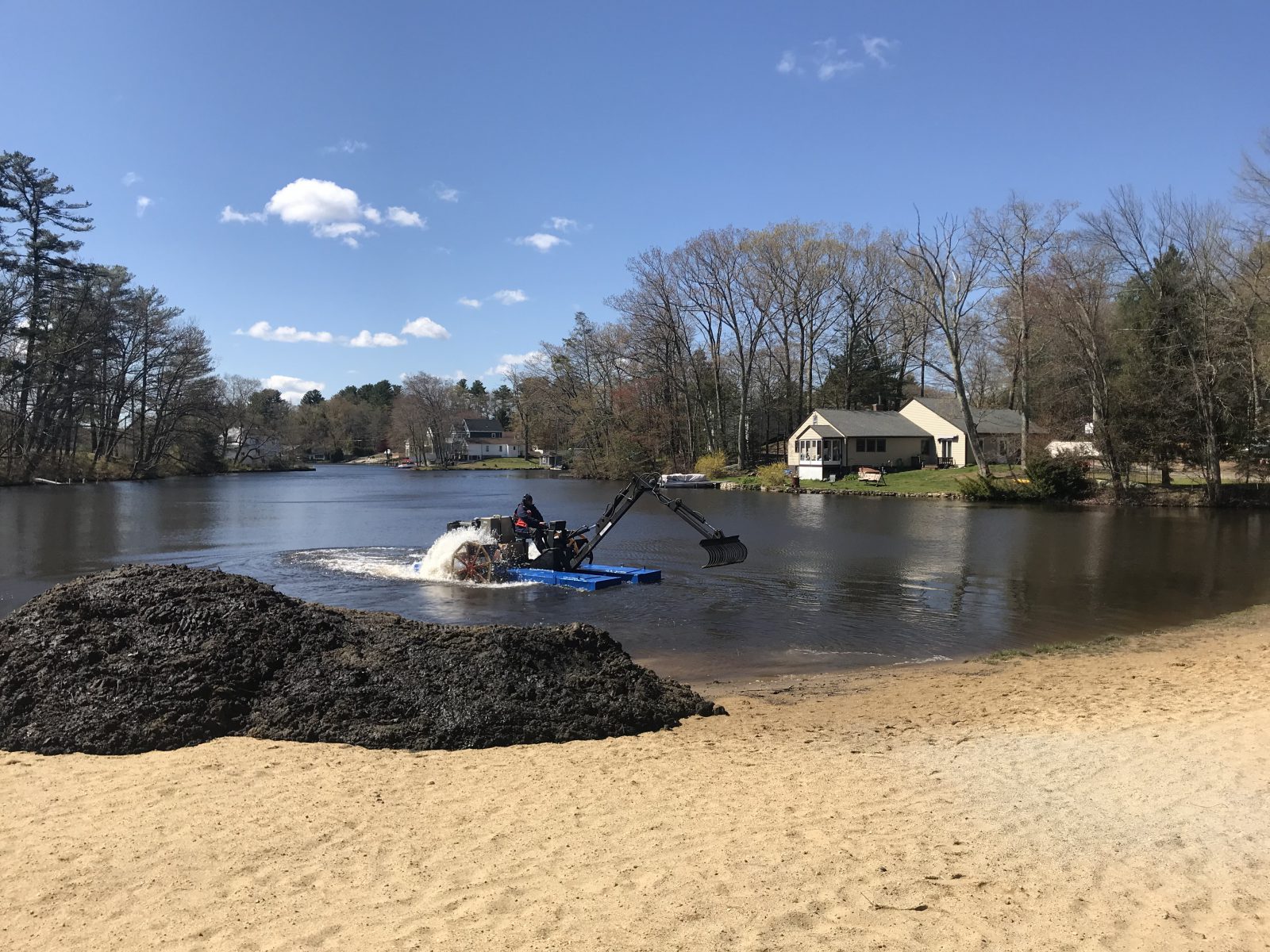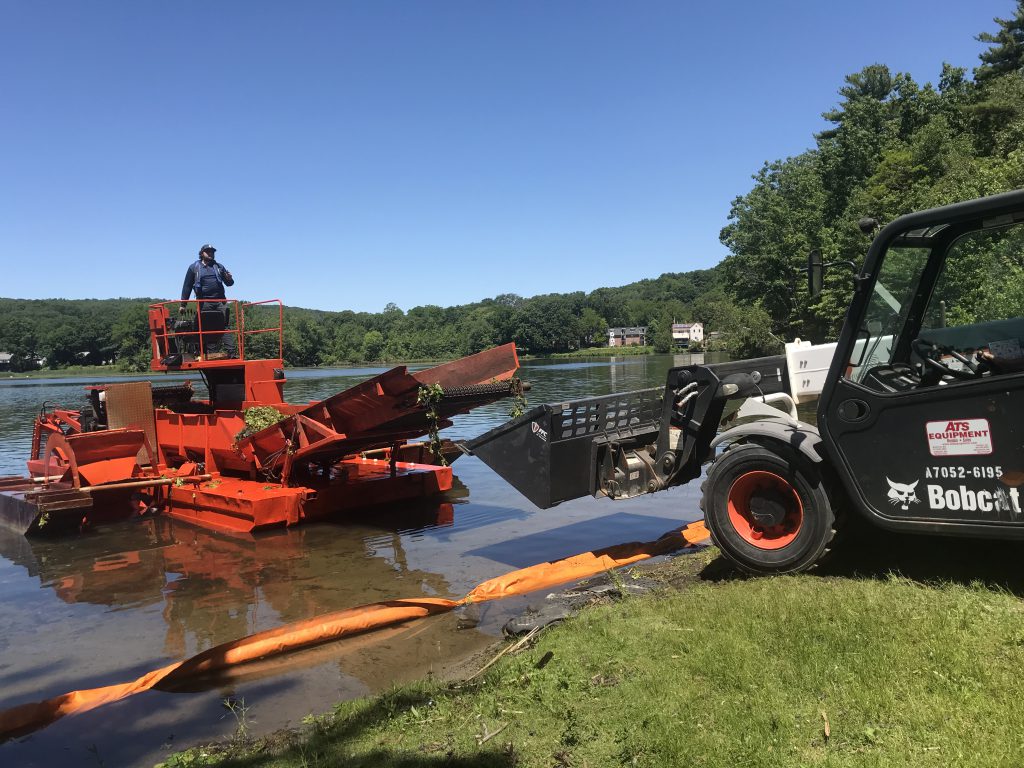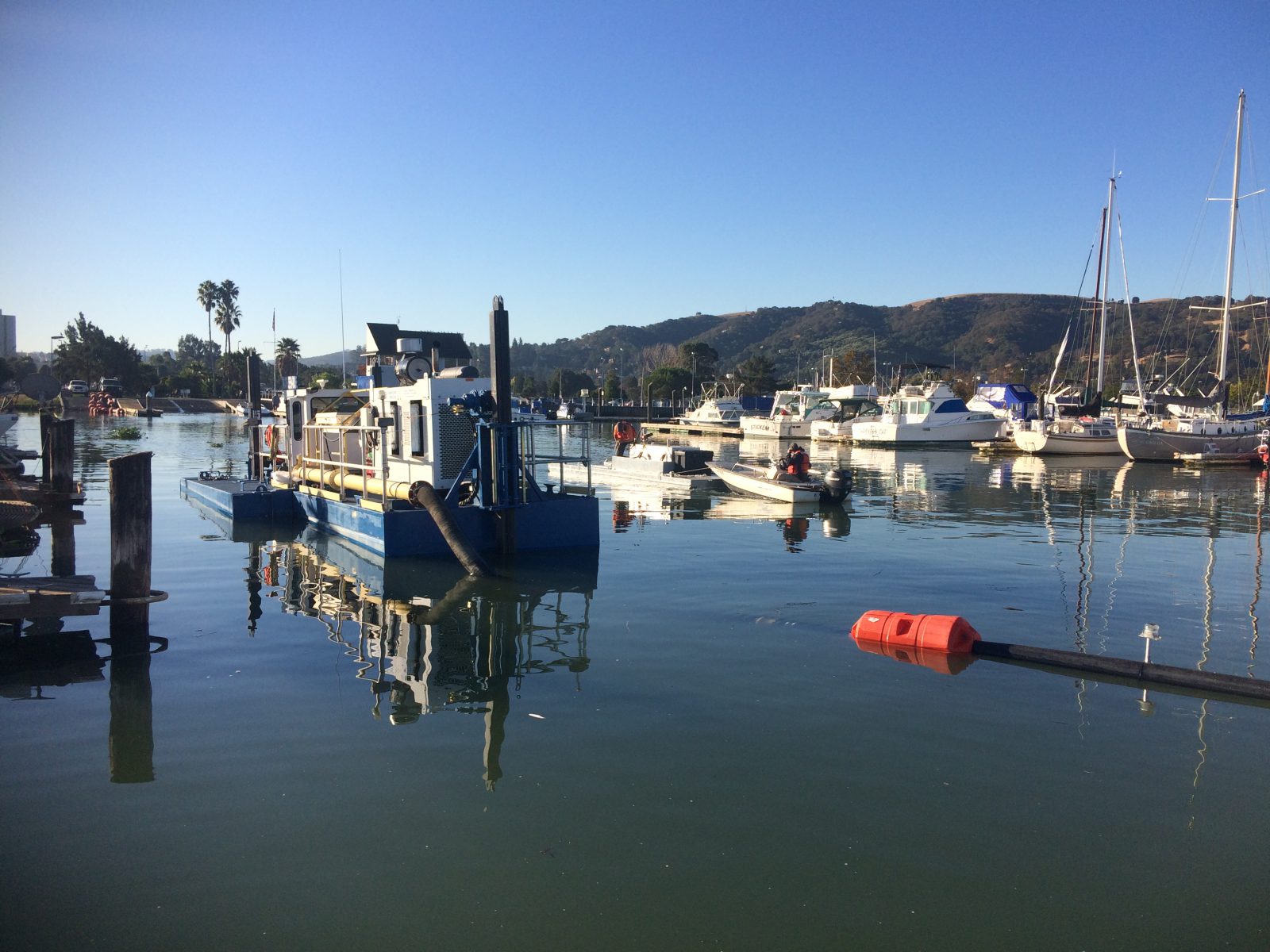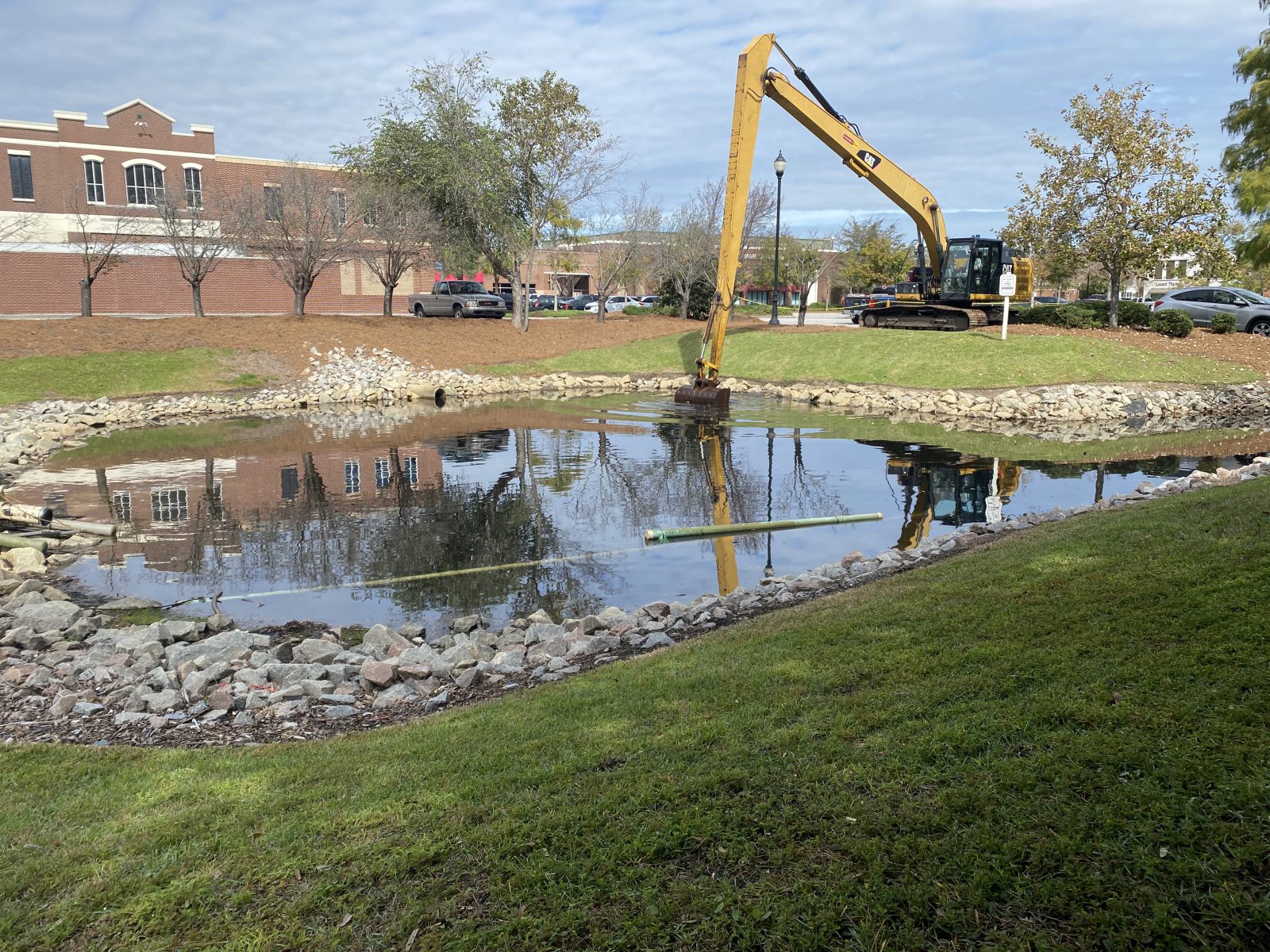

Harvesting, Hydro-raking, or Dredging… Which Solution Is Best?
Rarely is there one specific remedy for the restoration of a waterbody. Restoration often requires a multi-year management program encompassing a combination of aquatic management tools and techniques, such as herbicide and algaecide treatments, nutrient remediation, aeration, and biological augmentation. Mechanical plant and sediment removal is an additional management method that may be incorporated into a restoration program and has a number of ecological benefits including nutrient mitigation, increased water circulation, and open water habitat restoration.
Mechanical removal services encompass three distinct management tools and approaches: aquatic weed harvesting, hydro-raking, and dredging. While each provides ecological benefits, it is important to determine which option is best suited for your specific management objectives for your lake or pond.
Harvesting
The aquatic weed harvester is a floating barge that cuts and effectively removes nuisance vegetation and algae from the surface of a waterbody. The plant material is collected and then offloaded, either into a container to be transported offsite or to a designated onshore compost area.
Mechanical harvesting can be an ideal management option for annual plants that are invasive or at nuisance levels. The aquatic weed harvester has been proven effective on water chestnut, giant salvinia, water soldier, water hyacinth, and other stubborn species.This is an eco-friendly solution that does not require temporary water use restrictions during or after the work, which is sometimes the case for herbicide techniques.
Mechanical Harvesting In Action
Hydro-raking
The hydro-rake is also a floating barge run by two hydraulic paddle wheels, but it is uniquely equipped with a 12-foot hydraulic arm with a rake attachment that is used to rake the pond bottom and remove detritus, bottom muck, debris, and aquatic vegetation with attached root systems. The hydro-rake, having no on-board storage, must offload the collected material directly onshore or onto a transport barge for removal.
Like harvesting, hydro-raking can be an effective alternative to herbicide applications, but it has also proven to be effective in unison with these treatments. When managing challenging emergent or floating leaf species such as Phragmites or water lily, an herbicide application is often the first management approach, followed by hydro-raking. Hydro-raking is commonly utilized after control has been achieved so that it can collect the plant biomass and associated root structure, preventing it from contributing to the organic matter substrate below.
Hydro-raking is also a highly-effective tool to help restore depth volume to ponds and stormwater facilities. As muck amassess over time, it can reduce available depth and volume, increasing the risk of flooding and stormwater equipment damage. Hydro-rakes can reach up to 10 ft. down to remove undesirable materials and deposit them on the shore for off-site disposal.
Alternately, stakeholders can choose to utilize the muck for the creation of a bioengineered shoreline. During this process, a knitted mesh material called SOX is filled with the muck and then shaped into a long-lasting sediment containment barrier. Once it has been anchored, grass and native plant species can be directly planted into the mesh so that it seamlessly integrates into the surrounding property.
Mechanical Hydro-raking
Dredging
Dredging can be accomplished in three different ways – through mechanical dredging, hydraulic dredging, or dry dredging. The method chosen largely depends on a few factors including the composition of sediment, environmental sensitivity, the desired volume of material removed, available budget, and disposal conditions.
Mechanical dredging (clamshell/backhoe) is conducted through the use of buckets that excavate sediment and transfer it to barges or trucks for disposal or beneficial reuse, such as shoreline stabilization. Mechanical dredges – sometimes called Aquamogs – are truck transportable and may be delivered to nearly any waterbody for the removal of sediment or rooted marginal plant species in targeted areas.
Mechanical dredging is typically the more cost-effective option for most waterbodies, particularly those with rocks, sticks and hard debris, but it’s not always the best choice. Hydraulic dredging, the “workhorse” of the industry, is usually better-suited for sediments with immense volumes of muck and relatively low levels of debris, which are known to clog and damage the internal components.
Hydraulic dredges boast a nearly continuous operating cycle that facilitates the removal of substantial material in a short period of time while curtailing turbidity in the water column. With a rotating underwater cutter, hydraulic dredges pump and create liquid slurry (a mixture of sediment and water) which is transferred via floating pipeline to a disposal site. Hydraulic dredging generally requires large disposal ponds to allow natural drying of the slurry or portable dewatering equipment to squeeze enough water from the sediment.
Finally, both mechanical and hydraulic dredging are highly effective, but if your waterbody has deteriorated to the point that a dramatic change is needed, dry dredging is an additional option. During this process, a pond is completely drained of water and dry dredged with conventional excavation equipment.
These plant, debris, and sediment removal techniques are used in a wide array of projects on private, public and state waterbodies to maintain or help restore shorelines, coves, inlets and outlets, or open water. Professional lake managers understand the many considerations involved in the decision process and can help property owners identify the path that most aligns with their goals. Next time you view your lake or pond, consider its current state and expected longevity in the coming years. If you prioritize the depth, volume, aesthetics and overall health of your aquatic ecosystem, a mechanical solution may be the right choice.
SOLitude Lake Management is a nationwide environmental firm committed to providing sustainable solutions that improve water quality, enhance beauty and preserve natural resources. SOLitude’s team of aquatic scientists specializes in the development and execution of customized lake, stormwater pond, wetland and fisheries management programs. Services include water quality testing and restoration, algae and aquatic weed control, installation and maintenance of fountains and aeration systems, shoreline erosion control, muck and sediment removal and invasive species management. SOLitude partners with homeowners associations, golf courses, private landowners, businesses and municipalities. SOLitude Lake Management is part of Rentokil, a leading business services company, operating across the United States, Canada and Puerto Rico.











